Panaxynol improves crypt and mucosal architecture, suppresses colitis-enriched microbes, and alters the immune response to mitigate colitis
- PMID: 38469632
- PMCID: PMC11376977
- DOI: 10.1152/ajpgi.00004.2024
Panaxynol improves crypt and mucosal architecture, suppresses colitis-enriched microbes, and alters the immune response to mitigate colitis
Abstract
Ulcerative colitis (UC) is an idiopathic inflammatory disease of the large intestine, which impacts millions worldwide. Current interventions aimed at treating UC symptoms can have off-target effects, invoking the need for alternatives that may provide similar benefits with less unintended consequences. This study builds on our initial data, which showed that panaxynol-a novel, potent, bioavailable compound found in American ginseng-can suppress disease severity in murine colitis. Here we explore the underlying mechanisms by which panaxynol improves both chronic and acute murine colitis. Fourteen-week-old C57BL/6 female mice were either given three rounds of dextran sulfate sodium (DSS) in drinking water to induce chronic colitis or one round to induce acute colitis. Vehicle or panaxynol (2.5 mg/kg) was administered via oral gavage three times per week for the study duration. Consistent with our previous findings, panaxynol significantly (P < 0.05) improved the disease activity index and endoscopic scores in both models. Using the acute model to examine potential mechanisms, we show that panaxynol significantly (P < 0.05) reduced DSS-induced crypt distortion, goblet cell loss, and mucus loss in the colon. 16S Sequencing revealed panaxynol altered microbial composition to suppress colitis-enriched genera (i.e., Enterococcus, Eubacterium, and Ruminococcus). In addition, panaxynol significantly (P < 0.05) suppressed macrophages and induced regulatory T-cells in the colonic lamina propria. The beneficial effects of panaxynol on mucosal and crypt architecture, combined with its microbial and immune-mediated effects, provide insight into the mechanisms by which panaxynol suppresses murine colitis. Overall, this data is promising for the use of panaxynol to improve colitis in the clinic.NEW & NOTEWORTHY In the current study, we report that panaxynol ameliorates chemically induced murine colitis by improving colonic crypt and mucosal architecture, suppressing colitis-enriched microbes, reducing macrophages, and promoting the differentiation of regulatory T-cells in the colonic lamina propria. This study suggests that this novel natural compound may serve as a safe and effective treatment option for colitis patients.
Keywords: American ginseng; goblet cells; macrophages; microbiota; regulatory T-cells.
Conflict of interest statement
No conflicts of interest, financial or otherwise, are declared by the authors.
Figures

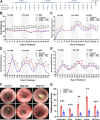
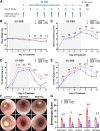
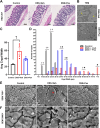

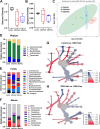
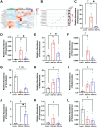
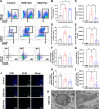

Comment in
-
Exploring the use of panaxynol from American ginseng to combat intestinal inflammation and colon cancer.Am J Physiol Gastrointest Liver Physiol. 2024 Aug 1;327(2):G120-G122. doi: 10.1152/ajpgi.00135.2024. Epub 2024 Jun 25. Am J Physiol Gastrointest Liver Physiol. 2024. PMID: 38915278 No abstract available.
Similar articles
-
Matrine Ameliorates DSS-Induced Colitis by Suppressing Inflammation, Modulating Oxidative Stress and Remodeling the Gut Microbiota.Int J Mol Sci. 2024 Jun 16;25(12):6613. doi: 10.3390/ijms25126613. Int J Mol Sci. 2024. PMID: 38928319 Free PMC article.
-
Beneficial Effects of Fecal Microbiota Transplantation on Ulcerative Colitis in Mice.Dig Dis Sci. 2016 Aug;61(8):2262-2271. doi: 10.1007/s10620-016-4060-2. Epub 2016 Feb 5. Dig Dis Sci. 2016. PMID: 26846120
-
Panaxynol alleviates colorectal cancer in a murine model via suppressing macrophages and inflammation.Am J Physiol Gastrointest Liver Physiol. 2023 Oct 1;325(4):G318-G333. doi: 10.1152/ajpgi.00119.2023. Epub 2023 Jul 25. Am J Physiol Gastrointest Liver Physiol. 2023. PMID: 37489869 Free PMC article.
-
Thymopentin ameliorates dextran sulfate sodium-induced colitis by triggering the production of IL-22 in both innate and adaptive lymphocytes.Theranostics. 2019 Oct 12;9(25):7490-7505. doi: 10.7150/thno.35015. eCollection 2019. Theranostics. 2019. PMID: 31695782 Free PMC article.
-
Anti-tumor necrosis factor α therapy associates to type 17 helper T lymphocytes immunological shift and significant microbial changes in dextran sodium sulphate colitis.World J Gastroenterol. 2019 Mar 28;25(12):1465-1477. doi: 10.3748/wjg.v25.i12.1465. World J Gastroenterol. 2019. PMID: 30948910 Free PMC article.
References
-
- Bhala N, Hart A, Watts D, Lewis S, Ghosh S, Hansell C, Ahmad T, Van Haaren S, Sensky T. Disease activity, burden and suffering in patients with ulcerative colitis in the UK cohort recruited into the global ICONIC study. Frontline Gastroenterol 14: 25–31, 2023. doi:10.1136/flgastro-2022-102104. - DOI - PMC - PubMed
-
- Bullard BM, VanderVeen BN, McDonald SJ, Cardaci TD, Murphy EA. Cross talk between the gut microbiome and host immune response in ulcerative colitis: nonpharmacological strategies to improve homeostasis. Am J Physiol Gastrointest Liver Physiol 323: G554–G561, 2022. doi:10.1152/ajpgi.00210.2022. - DOI - PMC - PubMed
-
- Sathish JG, Sethu S, Bielsky MC, de Haan L, French NS, Govindappa K, Green J, Griffiths CE, Holgate S, Jones D, Kimber I, Moggs J, Naisbitt DJ, Pirmohamed M, Reichmann G, Sims J, Subramanyam M, Todd MD, Van Der Laan JW, Weaver RJ, Park BK. Challenges and approaches for the development of safer immunomodulatory biologics. Nat Rev Drug Discov 12: 306–324, 2013. doi:10.1038/nrd3974. - DOI - PMC - PubMed
Publication types
MeSH terms
Substances
Grants and funding
LinkOut - more resources
Full Text Sources

